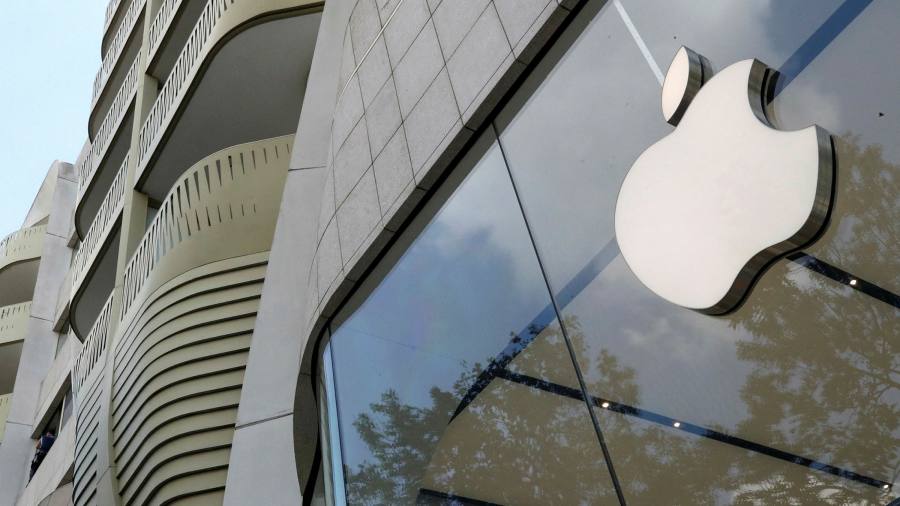[ad_1]
Apple’s revenues grew slightly on the back of iPhone sales and its services division despite headwinds from supply chain shortages and factory shutdowns in China.
The iPhone maker said revenues had risen 2 per cent from a year ago to $83bn, slightly ahead of analysts’ forecasts for $82.8bn, according to Refinitiv.
Apple in April had warned of up to $8bn in setbacks related to supply and production issues for the quarter. But finance chief Luca Maestri told the Financial Times that those costs ended up being less than $4bn, and should improve in the current quarter.
“The situation on supply is improving,” he said. “The big question mark, as always, are potential Covid restrictions, but in the current environment, if nothing changes, we expect supply constraints to be less than what we saw in June.”
Earnings per share for the quarter fell 8 per cent to $1.20, beating forecasts for $1.15. Net profit was down 10 per cent to $19.4bn, above forecasts of $19bn.
Shares of Apple, which have fallen about 13.6 per cent year-to-date amid a broader tech sell-off, rebounded 3 per cent in after-hours trading.
“Credit should be given to [chief executive Tim] Cook for the way he has led this company over the last couple of years,” said Paolo Pescatore, analyst at PP Foresight. “The company is very well placed to weather any storm, in stark contrast to others.”
Apple’s most important product is thriving, executives said. Sales of its iPhone, which accounted for 49 per cent of overall revenue, rose 3 per cent to $40.7bn. Cook said the June quarter saw a “record” number of people switching to iPhone from Android.
“On iPhone, we haven’t seen any sign of demand weakness from the macro environment other than foreign exchange,” Maestri said. “We believe demand continues to be very strong but we don’t have enough supply to satisfy that demand.”
Maestri noted that Apple generated almost $23bn in operating cash flow and returned more than $28bn to shareholders through dividends and share buybacks.
Apple’s “installed base of devices” — which include iPhones, iPads and other hardware — reached an all-time high for “all major product categories”, Maestri said, although he declined to provide a specific number. In January that figure totalled 1.8bn.
That helped boost revenue at Apple’s Services — a high-margin division that houses the App Store and digital media purchases — 12 per cent to $19.6bn, slightly below expectations for $19.7bn. The number of people paying recurring subscription fees to Apple across its range of services is 860mn, Apple reported, up 160mn in the past 12 months.
Mac revenues fell 10 per cent to $7.4bn from a year ago. Sales of iPads also dropped 2 per cent to $7.2bn and wearables, such as Apple Watch and AirPods, declined 8 per cent to $8bn.
Cook bemoaned “a cocktail of headwinds” holding back wearables, including a stronger dollar, supply constraints and Apple’s decision to pull out of Russia.
Apple also cited “deceleration” in its advertising business, days after Meta, Snap, Twitter and YouTube all disappointed investors.
Analysts at Bernstein had previously warned that fiscal year 2023 revenue estimates might be too high if the broader economy continues to falter.
“Apple is consumer-centric, and is highly transactional, with less than 10 per cent of its revenues and profits being recurring — meaning it could be vulnerable to a downturn,” they wrote.
[ad_2]
Image and article originally from www.ft.com. Read the original article here.

